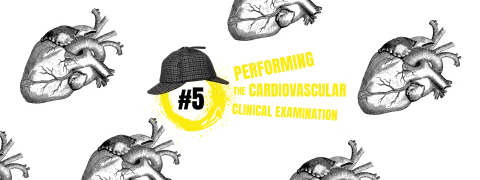
Supplementary exercises along with a bilingual version of the texts presented in the paper version are available in this online version. On this site, you can also find the translation of the key expressions, two short videos corresponding to the topics covered in this issue and an audio file for the pronunciation of tricky words.
Dans ce nouveau numéro, vous trouverez une nouvelle contribution indiquant la manière de présenter les méthodes mises en œuvre dans votre étude. Des exercices complémentaires ainsi qu’une version bilingue des textes de la version papier sont disponibles dans cette version en ligne. Sur ce site, vous trouverez également la traduction des expressions essentielles, deux courtes vidéos correspondant aux thèmes abordés dans ce numéro et un fichier audio correspondant à la prononciation des mots difficiles.
Thus, the aim of the study I am going to present today was to investigate ![]() the hypothesis
the hypothesis ![]() that oral resveratrol attenuates hyperglycemia
that oral resveratrol attenuates hyperglycemia ![]() , proinflammatory cytokines
, proinflammatory cytokines ![]() and oxidative stress in diabetic
and oxidative stress in diabetic ![]() rats.
rats.
Experimental diabetes ![]() was induced in fasted
was induced in fasted ![]() rats. After a week, which is the time needed for the development
rats. After a week, which is the time needed for the development ![]() and aggravation
and aggravation ![]() of diabetes, rats with moderate diabetes were selected for the experiment. The details of the experimental procedures
of diabetes, rats with moderate diabetes were selected for the experiment. The details of the experimental procedures ![]() are available
are available ![]() in the handout
in the handout ![]() .
.
The experimental animals were divided into five groups, each group comprising ![]() six rats as detailed on the slide. All of the rats had free access
six rats as detailed on the slide. All of the rats had free access ![]() to normal food and water.
to normal food and water.
Group 1 was composed of non-diabetic control rats with no treatment.
Group 2 comprised control rats that were treated with resveratrol at a dose of 5 mg per kg of body weight ![]() per day in aqueous
per day in aqueous ![]() suspension orally for 30 days.
suspension orally for 30 days.
Group 3 contained rats with induced ![]() diabetes without resveratrol.
diabetes without resveratrol.
Group 4 contained diabetic rats treated with resveratrol in aqueous suspension orally for 30 days.
Group 5 was composed of diabetic rats treated with glyclazide at a dose of 5 mg per kg of body weight per day in aqueous suspension orally for 30 days.
During the experiment, body weight, blood glucose ![]() , food and water consumption were determined
, food and water consumption were determined ![]() at regular intervals and physical examinations were done. The dosage
at regular intervals and physical examinations were done. The dosage ![]() was adjusted every week according to any change in body weight to maintain a similar dose per kg of body weight over the whole study period for each group. At the end of the treatment, the rats were fasted overnight, anaesthetized
was adjusted every week according to any change in body weight to maintain a similar dose per kg of body weight over the whole study period for each group. At the end of the treatment, the rats were fasted overnight, anaesthetized ![]() and killed by decapitation. The blood
and killed by decapitation. The blood ![]() was collected with anticoagulant for plasma separation and without anticoagulant for serum separation.
was collected with anticoagulant for plasma separation and without anticoagulant for serum separation.
Of course, these experiments were conducted ![]() in compliance
in compliance ![]() with the ethical standards
with the ethical standards ![]() approved by the Institutional Animal Ethics Committee Guidelines
approved by the Institutional Animal Ethics Committee Guidelines ![]() .
.
I am afraid I don’t have time to present the details of the biological ![]() assessments. Again, you’ll find all this information in the handout.
assessments. Again, you’ll find all this information in the handout.
I’d now like to move on to the results… (to be continued)
Click on the orange words to hear how they are pronounced.
Cliquer sur les mots en orange pour entendre leur prononciation.
Click on the following links to watch two short videos:
Cliquer sur les liens suivants pour voir deux courtes vidéos :
*Professeurs d’anglais médical à l’université de Dijon













